Premium Only Content
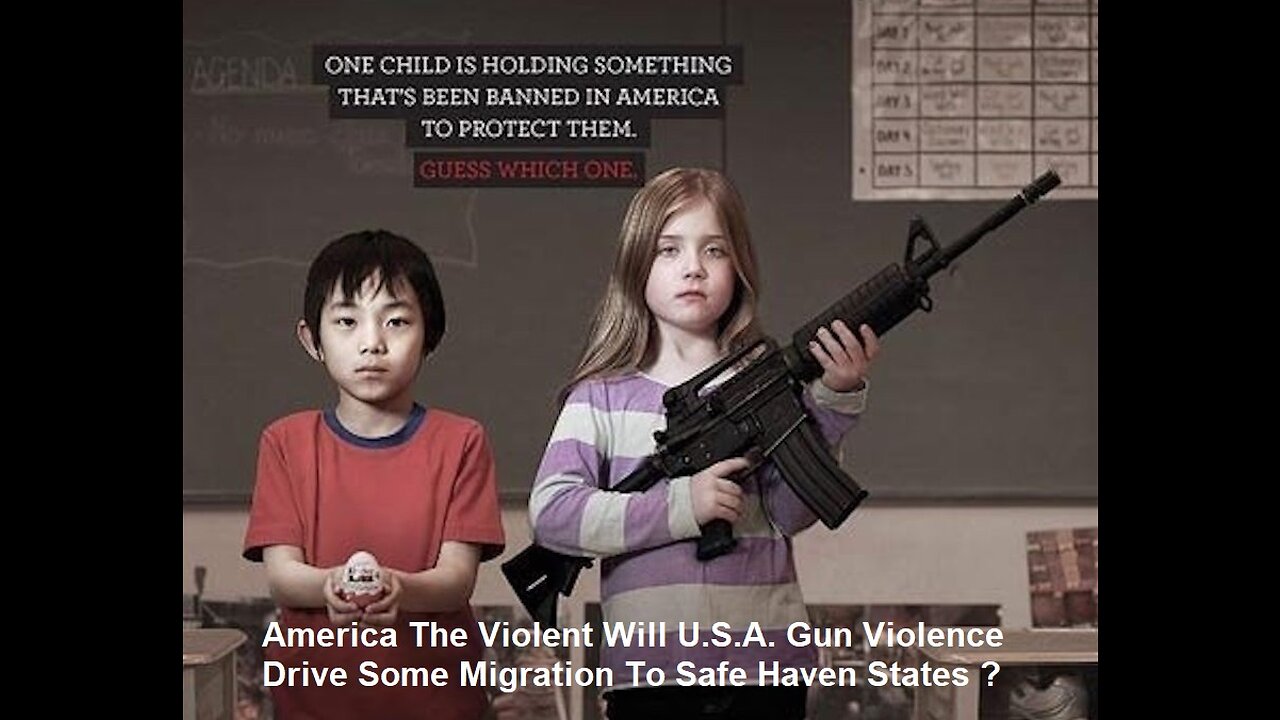
America The Violent Will U.S.A. Gun Violence Drive Migration To Safe Haven States ?
Following any major gun violence incident in America, a debate is sparked between two fundamentally opposed sides that eventually fades away with little or no significant policy changes. It seems inevitable then that parents will look outside of American borders for safer alternatives. Each time the gun control debate is reignited, the same actors voice the same arguments for and against expanding gun control legislation. While this battle ensues, parents around the country hug their kids a bit tighter, thinking of the children who did not come home from school that day.
Each day we inch closer to a reality in which school shootings are taken for granted. Rather than being tragic and extraordinary circumstances, school shootings fall into the same category as a tornado: an unfortunate and periodic occurrence that can only be prepared for, not prevented. The most recent solutions to the problem of school shootings are bullet-proof backpacks and armed teachers. When will parents decide that enough is enough?
Parents do have another option for keeping their children safe: they can choose to leave and educate their children elsewhere. It is quite remarkable that this option has yet to enter the public consciousness (though it is not surprising, given that the national response to a mass shooting has solidified into a routine). There are plenty of countries around the world where a school shooting has never taken place. There are even more where it has only happened once or twice. America is the only place where school shootings happen on regular basis.
Will American parents make the decision to leave their homeland in order to secure a safer life for their children? The answer short answer is probably not. Embedded into the American psyche is that the nation is a “Land of Immigrants”: for generations people from all corners of the globe have immigrated to America in search of the American Dream. Rarely do people leave.
So secure are American citizens within their borders that less than half have valid passports, most of which are used for travel to Canada and Mexico. Inherent in the national psyche is that Americans are living their best life. Many people will acknowledge that other countries may do particular things better or more efficiently than they are done in America (healthcare, gun control, infrastructure, finance, etc.), but that nowhere does everything better. This attitude, combined with a national narrative of suffering and sacrifice borne by millions of immigrants who left everything behind in search of a better life virtually guarantees an unwillingness to leave, no matter how hard things get.
Nevertheless, let us explore what a new wave of gun safety migration might look like for safe haven states like Australia. The policies Australia created following the Port Arthur massacre in 1996 frequently appear as evidence for both sides of the gun control debate. For those looking to limit public access to weapons, Australia is touted as a success story, in which law-abiding citizens were willing to give up their weapons following a national tragedy. On the other hand, this state-mandated intrusion on personal freedom is precisely the danger that gun advocates warn against (never mind that Australia’s policies have actually worked). Sadly, Australia has little voice in the matter; Malcolm Turnbull declined the invitation to advise President Trump on gun control at a recent press conference.
Meanwhile, countries around the world are tightening immigration requirements and pursuing controversial policies in the name of border protection. Fears include accepting terrorists posing as refugees, overburdened social welfare systems to which migrants do not contribute and dilution of the existing national culture. Those fleeing gun violence are perhaps akin to economic migrants, rather than refugees. This bodes well for assimilation in a new country, but immigration of this sort is nevertheless impeded by policies that are becoming ever stricter.
For parents in search of safe schools, the decision to leave America would be deliberate. In this aspect, they are far luckier than emigrants whose choices are forced by immediate financial or social stressors. Those who choose to leave are likely well-off and would not put significant strain on the social welfare system of the accepting nation.
Australia is particularly poised to be the gun-free haven of choice for fleeing Americans. The two states share a language, common history and much popular culture, making assimilation easy. An excellent, internationally competitive education system (in which only three people have ever died in school shooting incidents) ensures that parents would not have to sacrifice quality for safety. While it is possible that a small influx of Americans into Australia would create closer ties and build good-will, it is equally likely that immigration in great enough numbers would cause animosity between the two states.
Perhaps the idea to leave America will never occur to American parents. Children will continue to be killed, each incident slowly desensitizing parents to the tragedy they may one day face. Or perhaps the recent shooting in Parkland, Florida will be the catalyst for meaningful policy change to occur. As with any sweeping policy transformation in America, there is rarely one single incident that drives change. Rather it is the momentum built up by a series of events that forces the public to confront long-held practices and beliefs. The sooner this happens with gun control, the safer American schoolchildren will be.
MIAMI-DADE COUNTY, Fla. – In the wake of the deadly shooting at Marjory Stoneman Douglas High School, the question on everyone's mind is how to keep students safe.
Amid the discussion on gun control, sales of bulletproof backpacks have spiked nationwide.
"Schools, churches, people just going to work every day -- now any infrastructure that has people is a target," Ron Weaver, CEO of Eastern Beacon Industries, said.
Backpacks, sling bags and laptop bags, weighing as little as 3 pounds are now able to withstand rifle fire, like from the gun used inside the Parkland high school where 17 people died in a mass shooting Feb. 14.
Weaver showed his newest products at the Miami-Dade police vendor show Thursday.
"You have to take the backpack off and you flip it around and you deploy it. You have two plates," Weaver said.
"We're trying to look at the best product we can possibly get for our officers to better serve our community," Miami-Dade police Capt. Mario Knapp said.
Knapp said the department has been adding tools for active shooters for four years now. But Weaver, a retired Los Angeles police officer, is seeing a surge in parents wanting his products, which he said offer more protection than most bullet-resistant bags on the market.
"They put the 38 protection, which will stop a handgun, but you know, six out of the last 10 active shooters has been rifles," he said.
Local 10 News reporter Amy Viteri watched as several shots were fired into one of the bags. No bullet made it through.
If you look at the bag, you can see bullet holes in the fabric. But if you take out the plate, the heat of the bullet actually penetrates the plate, which trapped them inside.
Weaver calls the bag a defensive tool, regardless of what happens with gun laws.
"I think the days of ignoring it are done," he said. "You have to address it. You have to have the training. You have to think of the worst-case scenario."
What is the Real Problem with Gun Violence in America?
Gun violence is tragic, and all too familiar now. It has become akin to a political battle drill: a sociopathic individual armed with a gun enters a public place where people should be able to go and spend quality time and begins shooting, leaving a body count and a nation mourning yet another indescribable loss…then the wagons begin to circle.
And once again, the national debate begins. Sadly, though, it usually does look more like a debate and less like a conversation. It looks even less like problem resolving. Today in America, we need more conversation and less debate.
I am going to say something now that will not make me any points with our readership: guns are a part of the problem.
Yeah, I said it. I make that statement as a free American gun owner who has guns in his home for self-protection. As a 20-year police veteran who has carried at least one firearm every day for most of his adult life. As a husband and father who has armed his wife for her protection and taught his sons and daughters how to shoot and safely handle firearms. Most importantly, I say this as an American veteran who values his rights under the 2nd Amendment.
Now, before you start flaming me and sending nasty emails complaining about me, let me explain my statement.
Guns are a part of the problem in these all too common mass shootings, they are not THE problem.
The reality is, that the gun is the easiest, most lethal, and most effective way to kill a bunch of people in a short period of time. The average, untrained (or minimally trained) person would not be able to do this much damage with a knife or a bat. It could happen with explosives, but that requires a certain level of knowledge and resources. It is also easier to blow yourself up in your garage bomb lab than it is to shoot yourself.
I don’t want to ban guns or repeal the 2nd Amendment. I just want to acknowledge that the gun is a lethal weapon and part of the problem with mass murders in America. It’s a pretty big problem with criminal violence, suicide, and domestic violence also.
Mental illness is a problem, too. I don’t have a degree in psychology or psychiatry, but I’m comfortable making this statement: Normally functioning, well-adjusted individuals do not kill multiple people for their own entertainment or political benefit. Unless you are a soldier in a combat zone or defending a life, this is not something you do…even if you play violent video games while watching violent movies and listening to violent music like Marilyn Manson and Ozzie Osbourne.
We have a mental illness problem in our country. It is something that we need to address somehow.
Racism is not over. Yes, we have a black president. Before that, Colin Powell and Condoleeza Rice held the two highest political positions ever held by black people in America. Black and Hispanic people have made incredible strides forward in America. That doesn’t mean life is all flowers and happiness for minorities. Racism still exists. It is undeniable.
So, what’s the answer? I don’t know because the answer is complicated. But I know what the answer isn’t.
The answer is not to try to cram these myriad and complex issues into a single, easily categorized box that fits your particular political view.
The answer is not to dismiss those with differing viewpoints out of hand as racists, idiots, low information voters, gun nuts, hippies, race-baiters, or liberal hippies, although those labels might fit certain people.
The answer is not to ignore studies, evidence, or information that does not support your point of view. Nor is the answer to cherry-pick information that supports your point of view to the exclusion of all others. Wouldn’t it be better to look at the information presented to you and find the flaws while acknowledging the truths? Then do the same thing to the data that supports your position. I’m pretty sure they call that thinking….yes; I’m positive that is what it’s called.
I don’t the answer, but I think I know how we get to the answer.
We get the answer by coming together and trying to solve the problem. I don’t mean come together as hippies, Kumbaya-singing way, but by bringing people (preferably professional people) to the table and trying to find a way to solve this issue. Gun rights advocates, Constitutional scholars, mental health professionals, civil rights leaders, and law enforcement leaders, just to name a few. Then listen to each other. Actually listen. Don’t over each other like a panel on a 24-hour news channel. Don’t just quietly wait until you have a chance to talk. Listen. Hear. Understand.
Would this solve the problem? It might. It might not. These are complex issues that require complex solutions. But it would do more for America than what we’re doing now, which is pointing fingers and putting our heads in the sand.
2nd Amendment to the U.S. Constitution: Most U.S. Citizen Have the Right to Protect Themselves As an Oakland Police Officer, I was of the opinion that Law Abiding Citizens that are properly trained have the right to have guns. As recently as 2010 the City of Chicago had an ordinance banning handguns in your home. The United States Supreme Court disagreed.
They ruled, pursuant to the 2nd Amendment, every law-abiding citizen had the right to protect their home by having handguns in his/her home. [Mc Donald v. City of Chicago].
The case is particularly noteworthy for a few reasons. Firstly, it reaffirmed that the Second Amendment of the United States Constitution and its relatively simple wording – “A well regulated Militia, being necessary to the security of a free State, the right of the people to keep and bear Arms, shall not be infringed” – still holds true into the modern era. Secondly, it showcased that without constant legal vigilance, the Second Amendment could be dismantled by the efforts of lower courts.
The Second Amendment allows law-abiding citizens, no matter where in the country they live, to bear arms. However, each state does have its own specific rules and regulations regarding the right to own, carry, and use firearms. In order to keep the Second Amendment impenetrable from lower court attempts to subvert its power, it is important for all gun owners to get familiarized with the laws of their state and always abide by them. Illegal gun ownership behaviors and actions will only fuel the arguments against the Second Amendment’s importance.
The average gun owner in America has the right to:
• Own most types of firearms with the correct permits.
• Carry a concealed firearm with the right licenses/permits.
• Enter a public space with a firearm with appropriate permits.
• Use a firearm in self-defense when immediate severe harm or death is imminent if no defensive action is taken.
• Hunt.
You should always double-check your state’s own gun laws before purchasing, carrying, or using a firearm for the first time. There could be specific nuances in the law that place unusual restrictions on your Second Amendment rights. Even unknowingly violating the law can lead to serious weapons charges that carry heavy penalties, such as incarceration, steep fines, and the removal of gun ownership rights for many years or permanently.
The Second Amendment Right to Keep and Bear Arms One of the most hotly debated parts of the Constitution, the Second Amendment is a single sentence that leaves a lot open to interpretation. Passed in 1789 along with nine other amendments known as the Bill of Rights, it prevents the government from infringing on “well regulated Militias.” What this means, is up for debate. The Supreme Court released very few groundbreaking opinions on the topic until 2008 when they found the Second Amendment does in fact protect an individual right to bear arms.
What the Second Amendment Says
"A well regulated Militia, being necessary to the security of a free State, the right of the people to keep and bear Arms shall not be infringed."
Frequently Asked Questions
What was the original intent of the Second Amendment?
Many historians agree that the primary reason for passing the Second Amendment was to prevent the need for the United States to have a professional standing army. At the time it was passed, it seems it was not intended to grant a right for private individuals to keep weapons for self-defense.
What does the right to bear arms really mean?
The right to bear arms generally refers to a person’s right to possess weapons. Over the years, the Supreme Court has interpreted the Constitution’s right to bear arms as an individual self-defense right, making it very difficult for Congress to regulate guns.
What is a Second Amendment sanctuary?
Second Amendment sanctuaries are cities, towns, and counties that resist state and federal gun laws. They adopt formal resolutions either declaring support for Second Amendment rights or withhold support for the enforcement of gun laws. In most cases, this means the local government will not enforce gun laws they don't agree with - such as bans on bump stocks, assault weapons, and high-capacity magazines. However, many legal experts say sanctuary resolutions have no legal authority, and challenges in the courts are likely to follow.
The Second Amendment in Practice
United States Library of Congress, The Constitution of the United States of America: Analysis and Interpretation
For over 200 years, despite extensive debate and much legislative action with respect to regulation of the purchase, possession, and transportation of firearms, as well as proposals to substantially curtail ownership of firearms, there was no definitive resolution by the courts of just what right the Second Amendment protects. The Second Amendment is naturally divided into two parts: its prefatory clause (A well regulated Militia, being necessary to the security of a free State) and its operative clause (the right of the people to keep and bear Arms shall not be infringed).
To perhaps oversimplify the opposing arguments, the states’ rights thesis emphasized the importance of the prefatory clause, arguing that the purpose of the clause was to protect the states in their authority to maintain formal, organized militia units. The individual rights thesis emphasized the operative clause, so that individuals would be protected in the ownership, possession, and transportation of firearms.1 Whatever the Amendment meant, it was seen as a bar only to federal action, not state2 or private3 restraints.
One of the Second Amendment cases that the Court has heard, and until recently the only case challenging a congressional enactment, seemed to affirm individual protection but only in the context of the maintenance of a militia or other such public force. In United States v. Miller,4 the Court sustained a statute requiring registration under the National Firearms Act of sawed-off shotguns. After reciting the original provisions of the Constitution dealing with the militia, the Court observed that [w]ith obvious purpose to assure the continuation and render possible the effectiveness of such forces the declaration and guarantee of the Second Amendment were made. It must be interpreted with that end in view.5 The significance of the militia, the Court continued, was that it was composed of civilians primarily, soldiers on occasion. It was upon this force that the states could rely for defense and securing of the laws, on a force that comprised all males physically capable of acting in concert for the common defense, who, when called for service . . . were expected to appear bearing arms supplied by themselves and of the kind in common use at the time.6 Therefore, [i]n the absence of any evidence tending to show that possession or use of a ‘shotgun having a barrel of less than 18 inches in length’ at this time has some reasonable relationship to the preservation or efficiency of a well-regulated militia, we cannot say that the Second Amendment guarantees the right to keep and bear such an instrument. Certainly it is not within judicial notice that this weapon is any part of the ordinary military equipment or that its use could contribute to the common defense.7
After that decision, Congress placed greater limitations on the receipt, possession, and transportation of firearms,8 and proposals for national registration or prohibition of firearms altogether have been made.9 Miller, however, shed little light on the validity of such proposals. Pointing out that interest in the character of the Second Amendment right has recently burgeoned, Justice Thomas, concurring in the Court’s invalidation (on other grounds) of the Brady Handgun Violence Prevention Act, questioned whether the Second Amendment bars federal regulation of gun sales, and suggested that the Court might determine at some future date . . . whether Justice Story was correct . . . that the right to bear arms has justly been considered, as the palladium of the liberties of a republic.’10
It was not until 2008 that the Supreme Court definitively came down on the side of an individual rights theory. Relying on new scholarship regarding the origins of the Amendment,11 the Court in District of Columbia v. Heller12 confirmed what had been a growing consensus of legal scholars—that the rights of the Second Amendment adhered to individuals. The Court reached this conclusion after a textual analysis of the Amendment,13 an examination of the historical use of prefatory phrases in statutes, and a detailed exploration of the 18th century meaning of phrases found in the Amendment. Although accepting that the historical and contemporaneous use of the phrase keep and bear Arms often arose in connection with military activities, the Court noted that its use was not limited to those contexts.14 Further, the Court found that the phrase “well regulated Militia” referred not to formally organized state or federal militias, but to the pool of able-bodied men who were available for conscription.15 Finally, the Court reviewed contemporaneous state constitutions, post-enactment commentary, and subsequent case law to conclude that the purpose of the right to keep and bear arms extended beyond the context of militia service to include self-defense.
Using this individual rights theory, the Court struck down a District of Columbia law that banned virtually all handguns and required that any other type of firearm in a home be dissembled or bound by a trigger lock at all times. The Court rejected the argument that handguns could be banned as long as other guns (such as long-guns) were available, noting that, for a variety of reasons, handguns are the most popular weapon chosen by Americans for self-defense in the home.16 Similarly, the requirement that all firearms be rendered inoperable at all times was found to limit the core lawful purpose of self-defense.17 However, the Court specifically stated (albeit in dicta) that the Second Amendment did not limit prohibitions on the possession of firearms by felons and the mentally ill, penalties for carrying firearms in schools and government buildings, or laws regulating the sales of guns.18 The Court also noted that there was a historical tradition of prohibiting the carrying of dangerous and unusual weapons that would not be affected by its decision.19 The Court, however, declined to establish the standard by which future gun regulations would be evaluated.20 And, more importantly, because the District of Columbia is a federal enclave, the Court did not have occasion to address whether it would reconsider its prior decisions that the Second Amendment does not apply to the states.
The latter issue was addressed in McDonald v. Chicago,21 where a plurality of the Court, overturning prior precedent, found that the Second Amendment is incorporated through the Fourteenth Amendment and is thus enforceable against the states.22 Relevant to this question, the Court examined whether the right to keep and bear arms is fundamental to our scheme of ordered liberty23 or deeply rooted in this Nation’s history and tradition.24 The Court, relying on historical analysis set forth previously in Heller, noted the English common law roots of the right to keep arms for self-defense25 and the importance of the right to the American colonies, the drafters of the Constitution, and the states as a bulwark against over-reaching federal authority.26 Noting that by the 1850s the perceived threat that the National Government would disarm the citizens had largely faded, the Court suggested that the right to keep and bear arms became valued principally for purposes of self-defense, so that the passage of Fourteenth Amendment, in part, was intended to protect the right of ex-slaves to keep and bear arms. While it was argued by the dissent that this protection would most logically be provided by the Equal Protection Clause, not by the Due Process Clause,27 the plurality also found enough evidence of then-existent concerns regarding the treatment of black citizens by the state militia to conclude that the right to bear arms was also intended to protect against generally-applicable state regulation.
The Supreme Court's Blockbuster Second Amendment Ruling: What the Court Resolved and What it Left Open Before adjourning for the summer yesterday, the Supreme Court ruled, 5-4, that the Second Amendment protects a personal right to possess firearms for, among other purposes, self-defense. Accordingly, in District of Columbia v. Heller, the Court invalidated a D.C. law that bans private handgun possession and requires long guns (rifles and shotguns) to be stored either disassembled or under trigger lock.
The majority opinion by Justice Scalia—joined by Chief Justice Roberts and Justices Kennedy, Thomas, and Alito—expressed no doubt that the Second Amendment was originally understood to recognize a personal right (that is, not simply a right to use a gun while part of a militia). The opinion finds nothing but confirmation of that reading in the post-enactment history of the Amendment, at least until recent decades. Indeed, Justice Scalia uses variants on the word “clear” over a dozen times to describe the language or public understandings of the Second Amendment.
Meanwhile, in dissent, Justice Stevens—joined by Justices Souter, Ginsburg, and Breyer—also thought the meaning of the Second Amendment was clear, although they thought it clearly did not protect the possession or use of firearms outside the context of military service.
It is thus likely that both the majority and dissent are wrong, at least in one sense: If the Supreme Court divides 5-4, then whatever else one says about the answer to the question it resolved, one can hardly say it was clear.
Equally unclear are the consequences of the decision. In response to a separate dissent by Justice Breyer, Justice Scalia acknowledged that his opinion left unresolved important questions about the circumstances under which the Second Amendment permits firearms restrictions. Indeed, Justice Scalia practically invited new litigation over the scope of the Second Amendment.
After questioning a key premise of Justice Scalia’s opinion, this column addresses two questions left open by the Heller decision: first, its applicability to states and localities; and second, its applicability to handgun possession outside the home.
How the Majority Read the Second Amendment
The Second Amendment provides: “A well regulated Militia, being necessary to the security of a free State, the right of the people to keep and bear Arms, shall not be infringed.” Much of the debate over the meaning of the Amendment has centered on the relation between the prefatory language about the militia and the substantive provision concerning the right to keep and bear arms.
In his majority opinion, Justice Scalia contended that the substantive language most naturally protects a personal right to possess and carry weapons, and that the prefatory language, properly understood, reinforces that conclusion. The Framers, he said, were worried that the federal government might disarm the population, and so they protected the unorganized militia—a term referring, at the time, to able-bodied adult white men—by protecting a right to private possession and ownership of firearms. Although the purpose recited by the Second Amendment had to do with resisting federal encroachments on the militia, Scalia reasoned, the substance of the right was broader, and remains so.
Justice Scalia’s analysis of the relation between the two clauses of the Second Amendment is fundamentally originalist. He wants to know how the relation between the prefatory language and the keep-and-bear-arms language would have been understood by Americans in 1791. Although he does discuss the views of Americans later, in the Nineteenth Century, he does so primarily to show that the original understanding (as he perceives it) did not change.
In a striking passage, Justice Scalia admits that his reading of the Second Amendment may make little sense today. “Undoubtedly some think that the Second Amendment is outmoded in a society where our standing army is the pride of our Nation, where well-trained police forces provide personal security, and where gun violence is a serious problem,” Justice Scalia acknowledges. He continues: “That is perhaps debatable, but what is not debatable is that it is not the role of this Court to pronounce the Second Amendment extinct.”
Can Constitutional Provisions Become Obsolete?
But why not? Doctors at the time of the Founding believed that bleeding patients was an efficacious treatment for many ailments. Suppose that they had managed to insert into the Constitution the following provision: “The purging of ill humours, being necessary to the health of the human body, the right of the people to be bled by physicians, shall not be infringed.” Today we know that infectious disease is caused by micro-organisms, rather than by an imbalance of humours, and also that, with some notable exceptions, bleeding is generally quite harmful. Would we really want to say that a medical quack has a constitutional right to insist on bleeding her patients?
Indeed, we need not even struggle to concoct hypothetical cases. Article I, Section 8 of the Constitution empowers Congress to “coin money” and “regulate the value thereof,” but does not authorize the printing of money not backed by precious metal, and the Constitution expressly denies that power to the states. One reading of the Constitution thus would make U.S. currency—which is not convertible into gold—invalid. However, in the late Nineteenth Century, in the Legal Tender Cases, the Court upheld the government’s issuance of paper money.
The Court said that the grant to Congress of the power to coin money did not negate an implied power to print paper money, which could be seen as necessary and proper to implementing other expressly granted powers. That is a legitimate argument—in much the same way that the arguments offered by the dissent for a military-focused reading of the Second Amendment are legitimate—but in both circumstances, one senses that something else is driving the conclusion: In the Legal Tender Cases, the majority understood that while the Founders may have thought that the power to print paper money could only lead to runaway inflation, a modern economy can benefit enormously from the government’s responsible exercise of the power to expand the money supply. Likewise, the dissenters in Heller understood that widely available handguns could lead to havoc.
Justice Scalia is technically right: The Court lacks the power to declare a constitutional provision extinct. It does, however, have the power to construe a constitutional provision sensibly in light of modern circumstances. That is exactly what the Court did in the Legal Tender Cases, and what the dissenters believed they were doing in Heller. If Justice Scalia and the other Justices in the majority thought otherwise because they believe that widely available handguns make people safer—a view taken by gun rights groups—then they should have said so forthrightly.
What About the States?
The District of Columbia argued to the Court in Heller that even if the Second Amendment protects a personal right of armed self-defense, that right can have no application in the District because, as a federal territory, there is no state militia to be protected there. Because the Court rejected the notion that the militia clause of the Second Amendment limits the substantive clause, it dismissed this argument entirely.
The Court did, however, leave open the question of whether the Second Amendment applies against the states or only against the federal government. As I discussed in an earlier column on the Heller case, two Nineteenth Century cases held that the Second Amendment does not limit the States, but those cases preceded the modern doctrine applying other provisions of the Bill of Rights against the States under the Fourteenth Amendment.
In Justice Scalia’s Heller opinion, he discusses the Nineteenth Century cases—United States v. Cruikshank and Presser v. Illinois—but only for the purpose of arguing that these decisions are consistent with reading the Second Amendment as protecting a private right of armed self-defense. He does not say whether they continue to bar application of the Second Amendment to the States.
Consequently, states and municipalities that have enacted very restrictive gun laws will likely now face challenges under the Second Amendment. The lower courts will be required to reject these challenges, because the Supreme Court has said that only it can officially overrule its prior precedents; even if a lower court is confident the Court is poised to overrule a precedent, that court must still follow the precedent in the case before it, and then let that case or another like it make its way to the high Court so the overruling can occur.
Here, when one of these cases eventually reaches the Supreme Court, it seems likely that the members of the Heller majority would indeed hold that Cruikshank and Presser have been superseded by Heller.
The test the Court applies for determining whether a provision of the Bill of Rights applies against the States via the Fourteenth Amendment has been framed in a variety of ways. In the 1968 case of Duncan v. Louisiana¸ the Court recited the various formulations of the test with respect to rights protected by the Fifth and Sixth Amendments, and then summarized the incorporation issue as turning on whether a procedural protection “is fundamental to the American scheme of justice.” Translating that test into the Second Amendment context, the incorporation question would be whether a right to possess and carry firearms for personal use is fundamental to the American scheme of liberty. Given the Heller majority’s understanding of the relevant history, the answer would likely be yes.
What About Carrying Guns Outside the Home?
In his majority opinion, Justice Scalia went out of his way to state that the Second Amendment right of armed self-defense is not absolute. He provided what he himself termed a non-exhaustive list of permissible regulations: restriction on firearms possession by felons and the mentally ill; restrictions on possession in sensitive places such as schools and government buildings; and conditions on sales. He also indicated that the government may ban categories of weapons, such as machine guns, that are not “in common use,” and suggested that licensing laws may be permissible.
The Heller majority opinion summarized its holding in this way: “the District's ban on handgun possession in the home violates the Second Amendment, as does its prohibition against rendering any lawful firearm in the home operable for the purpose of immediate self-defense.” Although this statement of the case’s holding twice refers to the “home,” tellingly, the District laws challenged in the Heller case are not limited to the home. Thus, the opinion leaves open the question of whether a law like the District’s could be applied to those private citizens who seek to carry guns in public.
Justice Scalia’s majority opinion favorably cites cases upholding laws that prohibited carrying a concealed weapon, but does not say whether a state or municipality could ban the carrying of handguns altogether. That issue could well be presented by, for example, a challenge to New York City’s law, which requires a license to carry a handgun. A visitor from New Jersey who brings his handgun into New York City thereby violates the law. Meanwhile, the National Rifle Association has already expressed interest in challenging gun-possession restrictions in Chicago and San Francisco.
Do state and local laws forbidding the carrying of guns violate the Second Amendment? The Heller opinion does not say, but its logic implies a right to carry handguns in public. The majority interprets “bear arms” to mean “carry a weapon,” and nothing in the text of the Second Amendment as thus construed suggests that the right would be limited to the home.
The Policy Issue
Whether it is wise policy to permit law-abiding citizens to possess handguns in their homes or elsewhere is a hotly contested question. Gun control advocates point to statistics showing that guns make the people who possess them less, rather than more, safe. Gun rights groups point to data that, they say, prove the efficacy of armed self-defense.
Our usual method for resolving policy questions based on empirical disagreement is robust debate followed by legislative action. And it is clear from the relatively weak gun control laws in the United States that, in most jurisdictions, the people have concluded that guns should be legal. There are exceptions, however -- notably including some of the urban areas that have experienced the worst gun violence in recent years.
Yesterday’s decision may have the eventual consequence of removing strict gun control laws from the list of options available to local elected officials. If so, and if the gun control advocates turn out to have the better of the empirical argument, then the Court’s decision in Heller “will almost certainly cause more Americans to be killed.”
Those are not my words. That is what Justice Scalia had to say in dissent earlier this month in Boumediene v. Bush. He then added that sacrificing American lives “would be tolerable if necessary to preserve a time-honored legal principle vital to our constitutional Republic.” No doubt Justice Scalia believes that a personal right to armed self-defense is such a principle, but then, the majority in Boumediene thought that the availability of habeas corpus is also a time-honored legal principle.
McDonald v. City of Chicago Case Summary In 2010, the Supreme Court was asked to determine the scope of gun rights for individuals under the Second Amendment. They found that an individual's Second Amendment rights are enforceable against the states through the Fourteenth Amendment. In other words, they determined that "the right of the people to keep and bear arms" applied to individuals and not just citizen militias. Most importantly, the court concluded that these protections were enforceable against state governments, not just the federal government.
Background of McDonald v. City of Chicago
In 1982, the city of Chicago passed a law that banned new handgun registrations and required all firearms to be registered. The law effectively barred most private citizens from owning handguns. It stood for nearly thirty years until a new Supreme Court finding opened the door for a challenge. Essentially, the decision in McDonald v. City of Chicago would not have happened without District of Columbia v. Heller.
When deciding District of Columbia v. Heller in 2008, the Supreme Court found that the Second Amendment protected individuals' right to possess and carry weapons. Specifically, the court's decision established that:
"The Second Amendment protects an individual right to possess a firearm unconnected with service in a militia and to use that arm for traditionally lawful purposes, such as self-defense within the home."
The Heller decision struck down a District of Columbia law prohibiting residents from possessing firearms, including handguns, in their homes. Anticipating this result, the plaintiffs in McDonald v. City of Chicago filed their lawsuit the same day the Heller decision was announced. They alleged that Chicago's firearm law violated this individual right to bear arms.
The named plaintiff, Otis McDonald, was a 76-year-old Oak Park resident and retired maintenance engineer. He was an experienced hunter and legally owned several hunting rifles, but he felt growing concerns about safety in his neighborhood warranted owning a handgun. However, doing so was illegal under Chicago's gun ordinance.
The federal district court rejected McDonald's claims that the ban was unconstitutional, noting that prior Supreme Court cases had explicitly refrained from deciding whether the Second Amendment applied to the states. The Seventh Circuit Court of Appeals upheld that decision, relying on three 19th-century cases that interpreted the Fourteenth Amendment's privileges and immunities clause.
The Supreme Court had already decided in Heller that the federal government could not infringe on an individual's right to keep and bear arms. So the crucial question in McDonald v. Chicago was: Does the Second Amendment apply to state and local governments?
The Majority Opinion
The McDonald decision was a close one, with a 5-4 majority. Justice Samuel Alito, Jr. wrote the majority opinion and was joined by Chief Justice John Roberts and Justice Anthony Kennedy. Justices Antonin Scalia and Clarence Thomas wrote their own concurring opinions.
In previous cases, the Supreme Court declined to extend Second Amendment protections to the states. However, the majority in McDonald v. Chicago concluded that the Fourteenth Amendment incorporates the Second Amendment right to keep and bear arms for self-defense. This line of reasoning relies on the legal doctrine of "selective incorporation," discussed below.
Interestingly, the court had to reject the plaintiff's central argument - that an individual's right to bear arms is essential to a civilized legal system - because prior Supreme Court cases reached the opposite conclusion. Instead, Justice Alito reasoned that the Fourteenth Amendment's due process clause prohibits states from infringing on protections from the Bill of Rights, including the right to bear arms.
The right of individuals to keep and bear arms for self-defense, the majority reasoned, was essential to the American "scheme of ordered liberty and system of justice." Therefore, Chicago's handgun ban was unconstitutional.
"The right to bear arms must be regarded as a substantive guarantee," Justice Alito wrote, "not a prohibition that could be ignored so long as the States legislated in an evenhanded manner."
However, the Supreme Court acknowledged in Heller that an individual's right to bear arms has its limits. It doesn't necessarily give someone the right to keep and carry any weapon they choose for any purpose. It was easy for the majority to rationalize an individual owning a handgun for self-defense, but they conceded that certain individuals should not own firearms. States can also still limit where guns can be carried. Bans on weapons in schools and government buildings, for example, are allowed.
What Is Selective Incorporation?
The first ten amendments to the United States Constitution, also known as the Bill of Rights, originally only applied to the federal government. Selective incorporation is a legal doctrine the Supreme Court has used to apply those protections to state governments. They do this using the Fourteenth Amendment, which prohibits states from denying life, liberty, or property without due process of law.
The Supreme Court uses selective incorporation to apply certain constitutional protections to the states rather than whole amendments. At this point, selective incorporation has been used to extend nearly the entire Bill of Rights to actions by state governments.
Dissents
Justices Ruth Bader Ginsburg, Stephen Breyer, Sonia Sotomayor, and John Paul Stevens dissented. Justices Breyer and Stevens wrote separate opinions to outline their arguments against the majority's decision.
In his dissent, Justice Breyer argued that historical analysis in Heller was flawed, saying that it was unclear whether the writers of the Constitution intended for there to be a "private armed self-defense right." Instead, he proposed that the Supreme Court should consider the broader goals of the Constitution, such as:
Fostering equal respect for individuals
Maintaining a democratic form of government
Creating well-functioning institutions based on the separation of powers
Justice Breyer concluded, and Justices Ginsburg and Sotomayor agreed that the states would not have to recognize an individual right to bear arms under this framework.
Justice John Paul Stevens filed his own dissent on his very last day as a Supreme Court justice, arguing that the majority misunderstood the scope and purpose of the standards used in previous cases. Using a strictly historical approach to determine whether the Fourteenth Amendment incorporated gun rights, in his view, was untenable.
"The question we should be answering," he wrote, "is whether the Constitution guarantees individuals a fundamental right, enforceable against the States, to possess a functional, personal firearm, including a handgun, within the home."
This would be a much harder question to answer. But according to Justice Stevens, the problem of whether the Fourteenth Amendment incorporates the Second Amendment had been resolved in the 19th century. The way he saw it, the majority was overturning 137 years of precedent by deciding that the privileges and immunities clause included protecting gun rights from infringement by state governments.
Second Amendment Is Not Gun Control: Second Amendment Doesn’t Give Americans The “Right to bear Arms” It Prohibits the Government from ‘Disarming The People’. The Second Amendment doesn’t give Americans the “Right to bear Arms.” The 2nd Amendment” is supposed to “Prohibit the Government” from taking our Arms and ‘Disarming The People’.
It’s a protection from a possible Tyrannical Government!
There are two versions of the text of the Second Amendment, each with slight capitalization and punctuation differences, found in the official documents surrounding the adoption of the Bill of Rights. One version was passed by the Congress, while another is found in the copies distributed to the States and then ratified by them. As passed by the Congress: A well regulated Militia, being necessary to the security of a free State, the right of the people to keep and bear Arms, shall not be infringed. As ratified by the States and authenticated by Thomas Jefferson, Secretary of State: A well regulated militia being necessary to the security of a free state, the right of the people to keep and bear arms shall not be infringed.
U.S. Supreme Court: District of Columbia v. Heller (2008), “Right to bear Arms” is “clearly an individual right, having nothing whatsoever to do with service in the militia” and that it is a “Right” not to be disarmed by the Government and was not the granting of a new ‘right to have arms’.
“The Second Amendment is not about duck hunting….It is about our rights, all of our rights to be able to protect ourselves from ‘All Enemies Foreign and Domestic’. This includes protections from a possible Tyrannical Government.”
State Militia’s are completely separate from the Citizen’s Inherent Right ‘to bear Arms’.
The “Right to bear Arms” is not a State Issue, it’s a Federal Issue. No State Law can override the Federal United States Constitution.
The Preamble to The Bill of Rights Congress of the United States.
Amendment of the Constitution of the United States of America, proposed by Congress, and ratified by the Legislatures of the several States, pursuant to the fifth Article of the original Constitution.
Note: The following text is a transcription of the first ten amendments to the Constitution in their original form. These amendments were ratified December 15, 1791, and form what is known as the “Bill of Rights.”
– Amendment I
Congress shall make no law respecting an establishment of religion, or prohibiting the free exercise thereof; or abridging the freedom of speech, or of the press; or the right of the people peaceably to assemble, and to petition the Government for a redress of grievances.
– Amendment II
A well regulated Militia, being necessary to the security of a free State, the right of the people to keep and bear Arms, shall not be infringed.
– Amendment III
No Soldier shall, in time of peace be quartered in any house, without the consent of the Owner, nor in time of war, but in a manner to be prescribed by law.
– Amendment IV
The right of the people to be secure in their persons, houses, papers, and effects, against unreasonable searches and seizures, shall not be violated, and no Warrants shall issue, but upon probable cause, supported by Oath or affirmation, and particularly describing the place to be searched, and the persons or things to be seized.
– Amendment V
No person shall be held to answer for a capital, or otherwise infamous crime, unless on a presentment or indictment of a Grand Jury, except in cases arising in the land or naval forces, or in the Militia, when in actual service in time of War or public danger; nor shall any person be subject for the same offence to be twice put in jeopardy of life or limb; nor shall be compelled in any criminal case to be a witness against himself, nor be deprived of life, liberty, or property, without due process of law; nor shall private property be taken for public use, without just compensation.
– Amendment VI
In all criminal prosecutions, the accused shall enjoy the right to a speedy and public trial, by an impartial jury of the State and district wherein the crime shall have been committed, which district shall have been previously ascertained by law, and to be informed of the nature and cause of the accusation; to be confronted with the witnesses against him; to have compulsory process for obtaining witnesses in his favor, and to have the Assistance of Counsel for his defence.
– Amendment VII
In Suits at common law, where the value in controversy shall exceed twenty dollars, the right of trial by jury shall be preserved, and no fact tried by a jury, shall be otherwise re-examined in any Court of the United States, than according to the rules of the common law.
– Amendment VIII
Excessive bail shall not be required, nor excessive fines imposed, nor cruel and unusual punishments inflicted.
– Amendment IX
The enumeration in the Constitution, of certain rights, shall not be construed to deny or disparage others retained by the people.
– Amendment X
The powers not delegated to the United States by the Constitution, nor prohibited by it to the States, are reserved to the States respectively, or to the people.
AMENDMENT XVI
Passed by Congress July 2, 1909. Ratified February 3, 1913.
Note: Article I, section 9, of the Constitution was modified by amendment 16.
The Congress shall have power to lay and collect taxes on incomes, from whatever source derived, without apportionment among the several States, and without regard to any census or enumeration.
The Government does this Gun Control bit every year since 2009. And every year at least 10 million new guns are added to the 350 million we already have.
At the N.W.O. we don’t get it.
A well regulated Militia, being necessary to the security of a free State, the right of the people to keep and bear Arms, shall not be infringed.
The first semi-automatic rifle was introduced in 1885, the first semi-automatic pistol in 1892, and the first semi-automatic shotgun in 1902. Semi-automatics account for about 20 percent of the 300 million privately-owned firearms in the United States and the percentage is quickly rising, because semi-automatics now account for about 50 percent of all new firearms bought annually.
A semi-automatic rifle or semi-automatic pistol is an autoloading rifle or semi-automatic pistol that fires a single cartridge with each pull of the trigger, and uses part of the fired cartridge's energy to eject the case and load another cartridge into the chamber. For comparison, a single shot, derringer pistol and a bolt-action rifle requires the user to cycle the bolt manually before they can fire a second time, and a fully automatic rifle or pistol fires continuously until the trigger is released. This is called a Fully Automatic Sub Machine Guns.
What’s the Difference ? Machine Gun vs. Submachine Gun... Submachine guns use handgun ammunition. Machine guns use rifle ammunition. If a gun-toting character pulls the trigger and holds it there while the business end goes bang-bang-bang, then there's an excellent chance that firearm is a submachine gun or a machine gun.
So AR-15 and AK-47 Etc. Are Not Assault Weapon At ALL... Yes I Repeat Are Not Assault Weapon... So AR-15 and AK-47 & Other Guns Are and Fire Semi-Automatic Only The Same For 140 Years!
Here’s a quick cheat sheet to avoid some easy pitfalls with this terminology.
AR-15: Nope, the AR-15 isn’t a submachine gun or a machine gun. It’s not even an assault rifle. Read more about AR-15s here.
Assault Rifle: Many, but not all, machine guns (not submachine guns) are assault rifles. If it meets the criteria in this post, then you’re good to go.
Assault Weapon: Don’t use this term. At best, it’s vague. At worst, it introduces something politically loaded for no good reason. Read up on assault weapons in this post.
Fully Automatic Pistol/Fully Automatic Handgun/Fully Automatic Rifle: Even though they’re technically correct, I’ve not heard of “fully automatic pistol” or “fully automatic handgun” being used all that often. “Submachine gun” or “machine pistol” are the better bets. “Fully automatic rifle,” on the other hand, is a solid substitute for “machine gun.”
Machine Rifle: It’s tempting to use this term given machine guns use rifle ammunition, but writing in a “machine rifle” will probably win you a doofus award. Don’t be a doofus. Just write “machine gun.”
Referring to a “Submachine Gun” as a “Machine Gun” Upon Second Reference: I think this works. If a character is using a submachine gun on the first reference, and you call it a “machine gun” on the second reference as an abbreviated form, that’s kosher. Just don’t call it a corn dog. It’s not a corn dog.
Sub-Machine Gun vs. Submachine Gun: Pick one style and stick with it. I think “sub-machine gun” looks funky, and not in the good way like when I dance at wedding receptions. “Submachine gun” is the better of the two.
Submachine Pistol: Even though they fire handgun ammunition, substituting in “submachine pistol” for “submachine gun” is just too weird for this planet (and your fiction). However, “machine pistol” is a thing, and is covered a little later in this post.
Tactical Rifle: A good, but probably not great, catch-all for any military-esque, shouldered firearm. If you’re going for a generic depiction, pick submachine gun or machine gun and stick to it.
Synonym for Gun A weapon is anything that is designed to, or is used to, cause damage to a person or animal. Gun is a category of weapons that have barrels and accelerate a projectile of some kind with an explosive. Also called firearms. Some weapons with similar forms are also called guns even though they do not use an explosive or a projectile.
Yes Tyrannical Government Gun Control Is The U.S.A. Now ? See and Read About Operation Fast and Furious, the largest gunwalking probe, the ATF monitored the sale of about 122,000+ firearms sold, of which only 710 were recovered as of February 2012. A number of straw purchasers have been arrested and indicted; however, as of October 2022 over 10,000 people dead so far none of the targeted and killed. Yes Right Now Our Tyrannical Government U.S.A. Is Sell Guns To Gangs Right Now. Red Flags Laws and U.S. Gangs... Back Ground Check's - Ha ha ha Really... You Are Being Funny Now, See Video (Fast & Furious) How it went down.
The Real Number Now Are Over 1 Million Guns Sold with Out Any Back Ground Check Now as Dec. 31 2022 by the Bureau of Alcohol, Tobacco, Firearms and Explosives- Sold To The Drugs Cartels - any criminal organization with the intention of supplying Sex Worker and drug trafficking and guns etc. operations and also Remember The Taliban takes control of Afghanistan - there is a big concern emerging. $85 billion worth of military guns and equipment left by the Americans is now under Taliban's control. As of Dec 31 2022 Sold Over 5 Million Weapons To 100s drug cartels all over the world Now... bang bang you're dead !
As passed by the Congress: A well regulated Militia, being necessary to the security of a free State, the right of the people to keep and bear Arms, shall not be infringed. As ratified by the States and authenticated by Thomas Jefferson, Secretary of State: A well regulated militia being necessary to the security of a free state, the right of the people to keep and bear arms shall not be infringed.
U.S. Supreme Court: District of Columbia v. Heller (2008), “Right to bear Arms” is “clearly an individual right, having nothing whatsoever to do with service in the militia” and that it is a “Right” not to be disarmed by the Government and was not the granting of a new ‘right to have arms’.
“The Second Amendment is not about duck hunting….It is about our rights, all of our rights to be able to protect ourselves from ‘All Enemies Foreign and Domestic’. This includes protections from a possible Tyrannical Government.”
State Militia’s are completely separate from the Citizen’s Inherent Right ‘to bear Arms’. The “Right to bear Arms” is not a State Issue, it’s a Federal Issue. No State Law can override the Federal United States Constitution.
In the present world, there are many criminal organizations and gangs known for their brutality and violence, which is the most discussed topic all around the world. So, today we are going to uncover some of those gangs in this video about the most dangerous gangs in the United Sates Most Dangerous Gangs In The United States and Overseas.
-
 4:13:23
4:13:23
What If Everything You Were Taught Was A Lie?
20 days agoDeclassified Government Documents "Open Your Eye Before You Die" Reveal America’s Dark Secrets
3.35K -
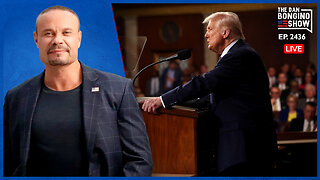 LIVE
LIVE
The Dan Bongino Show
2 hours agoTrump Rocks The Swamp And Dems Hit Rock Bottom (Ep. 2436) - 03/05/2025
68,690 watching -
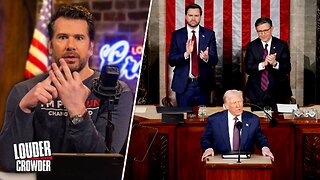 LIVE
LIVE
Steven Crowder
2 hours ago🔴 America is Back: Breaking Down Everything You Missed in Trump's Joint Address
93,910 watching -
 LIVE
LIVE
Timcast
1 hour agoTrump WINS American Approval After Speech, Democrats PANIC As Party COLLAPSING, Dem Voters QUIT
9,231 watching -
![🔴[LIVE] Stocks on Edge, Breaking Market News & Live Trading $1M || The MK Show](https://1a-1791.com/video/fwe1/27/s8/1/o/L/J/p/oLJpy.0kob-small-The-MK-Show-Mar.-5th.jpg) LIVE
LIVE
Matt Kohrs
8 hours ago🔴[LIVE] Stocks on Edge, Breaking Market News & Live Trading $1M || The MK Show
1,897 watching -
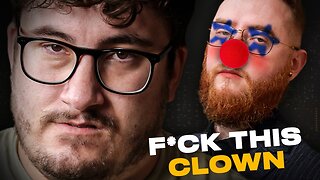 LIVE
LIVE
Caleb Hammer
17 minutes agoThis One Will Trigger You | Financial Audit
248 watching -
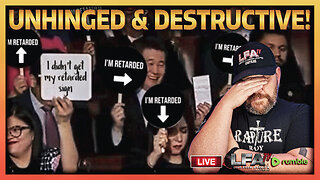 LIVE
LIVE
LFA TV
14 hours agoUNHINGED & DESTRUCTIVE! | LIVE FROM AMERICA 3.5.25 11AM
913 watching -
 LIVE
LIVE
Dr David Jockers
55 minutes ago12 WARNING Signs You’re Low on Vitamin D You Need to Know!
157 watching -
 50:13
50:13
BonginoReport
4 hours agoState of the Union Breakdown: Democrats' Disastrous Decorum (Ep.153) - 03/05/2025
77.1K187 -
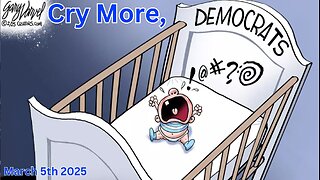 LIVE
LIVE
Wendy Bell Radio
6 hours agoCry More, Democrats
14,780 watching